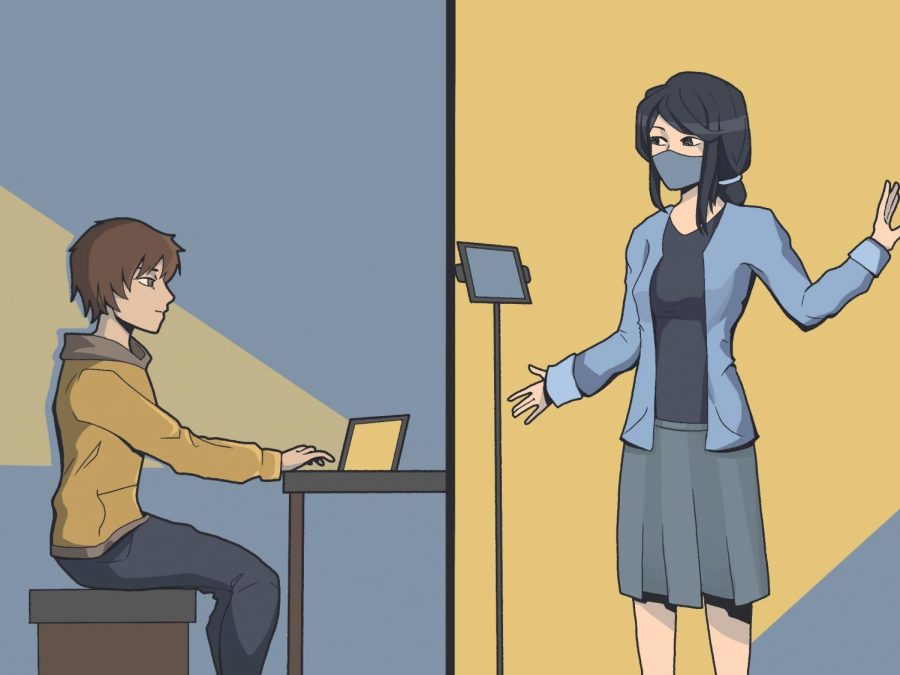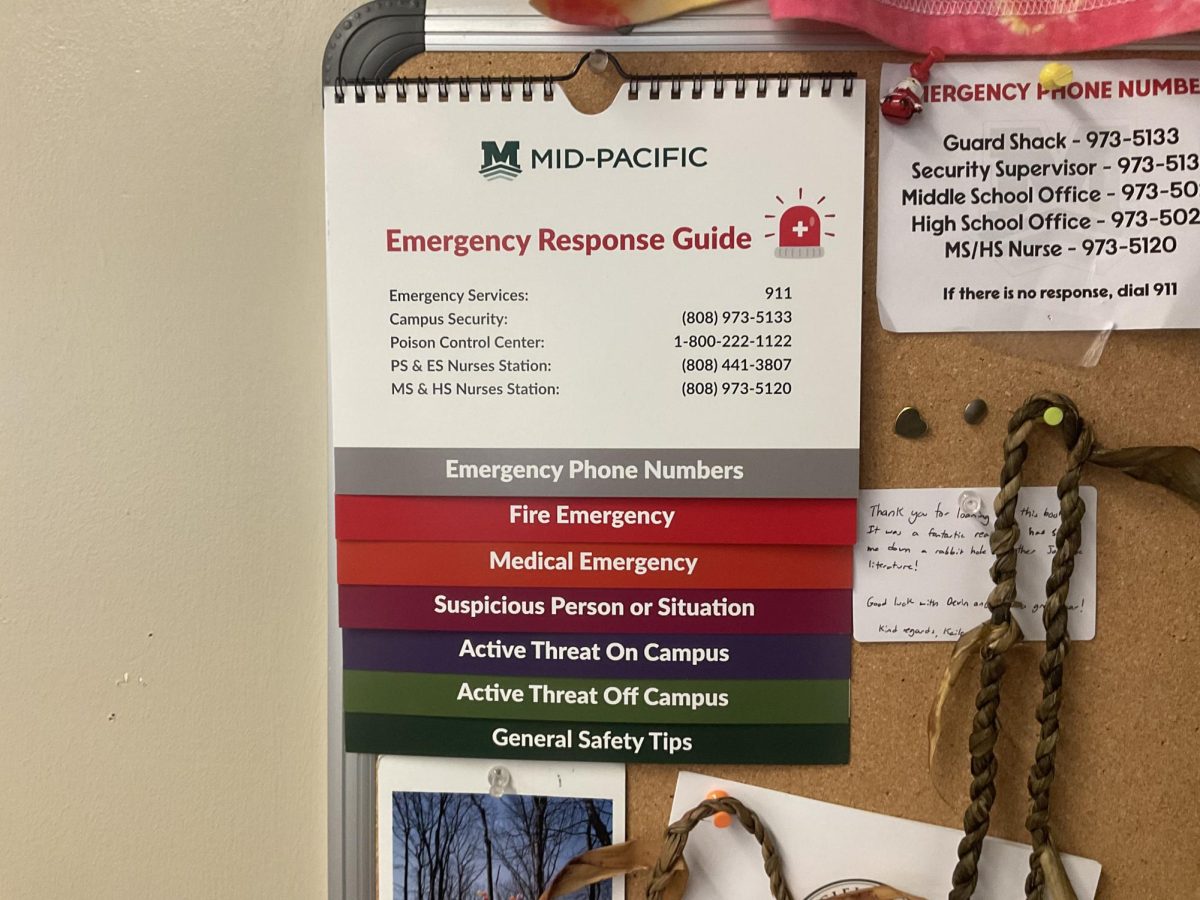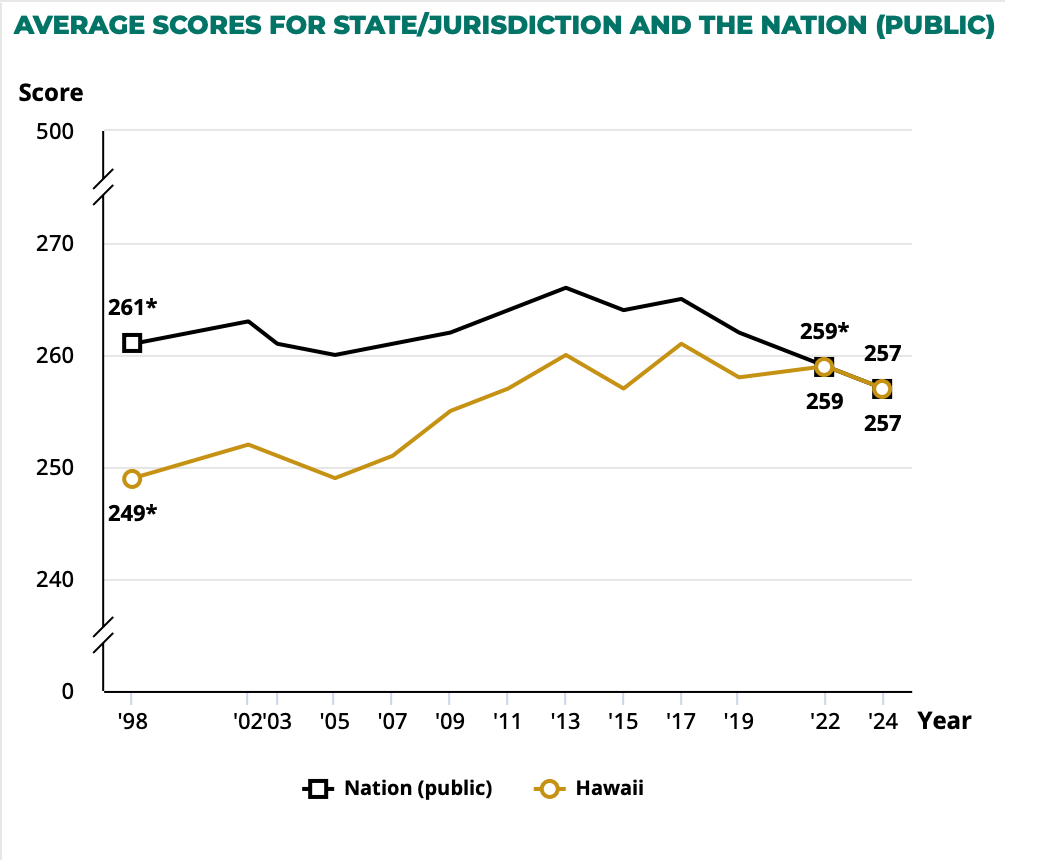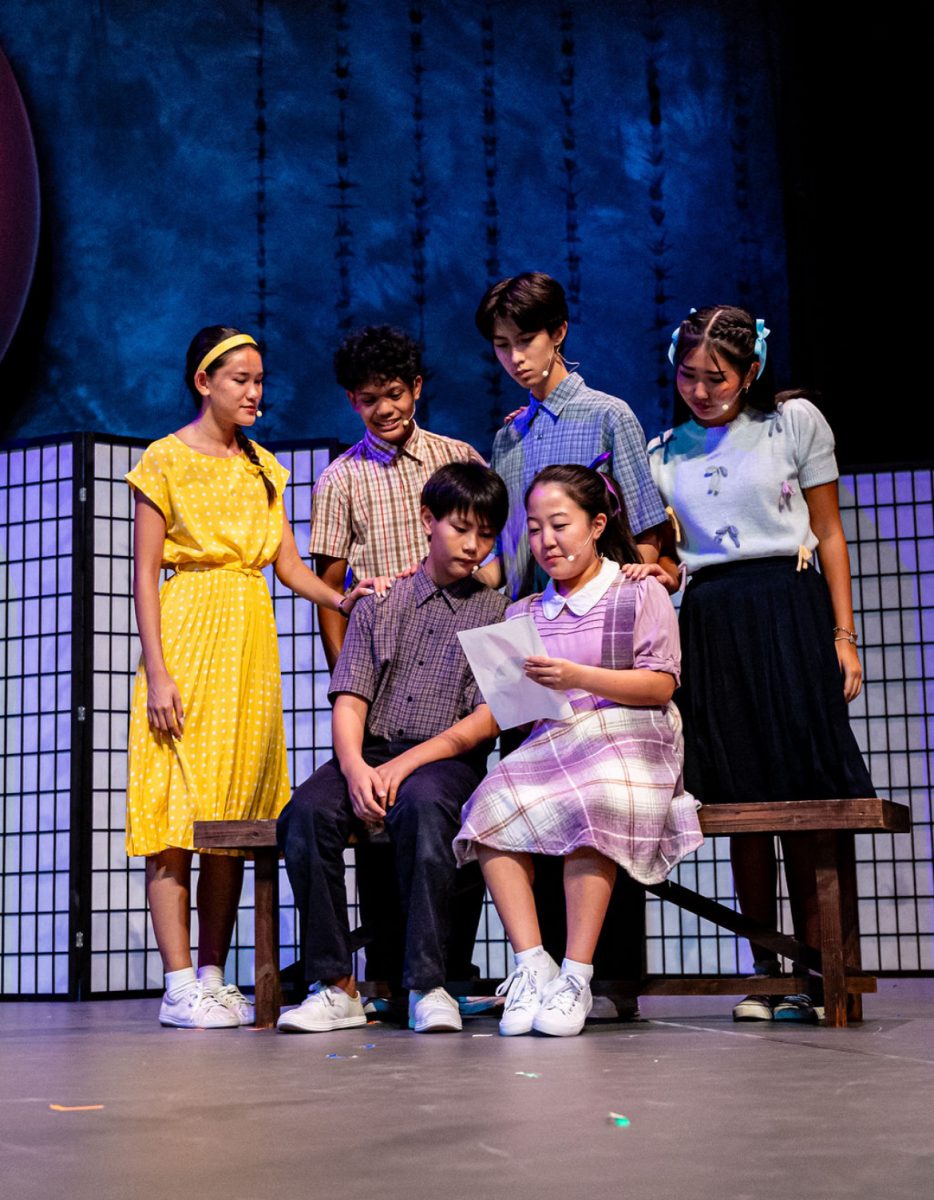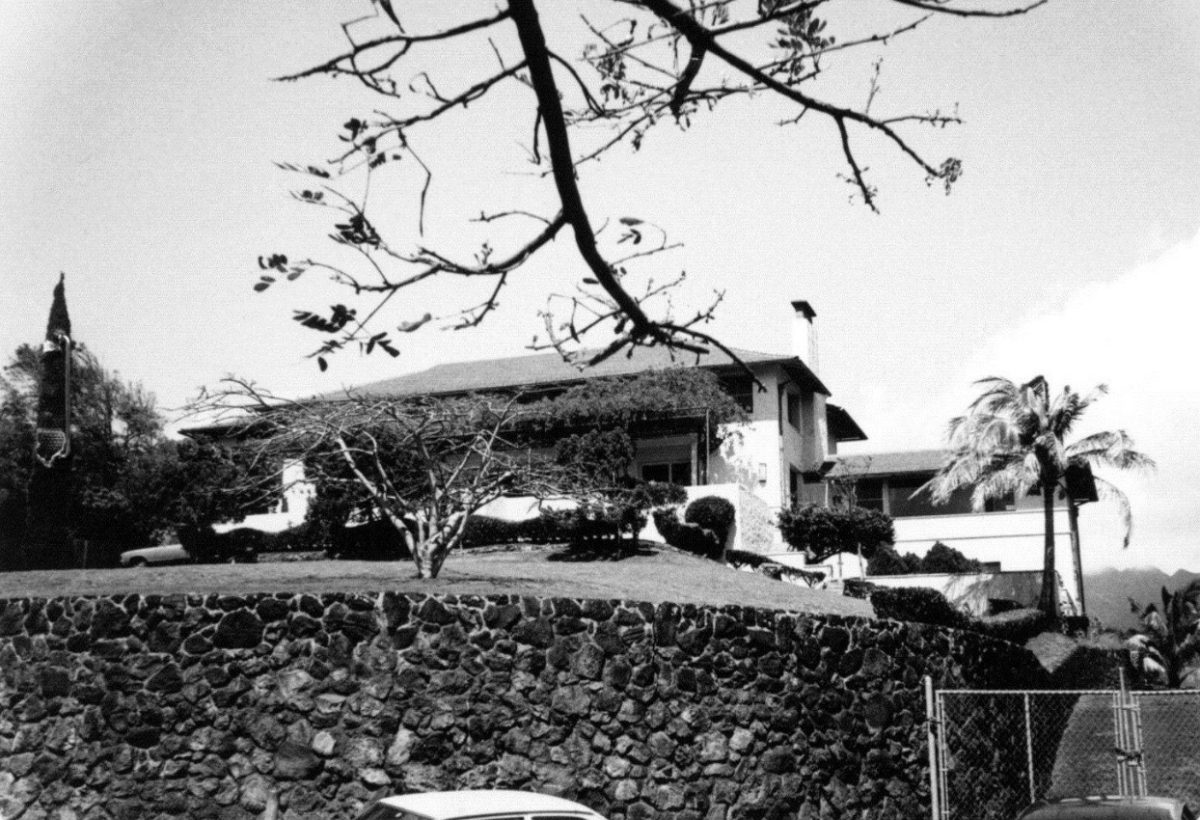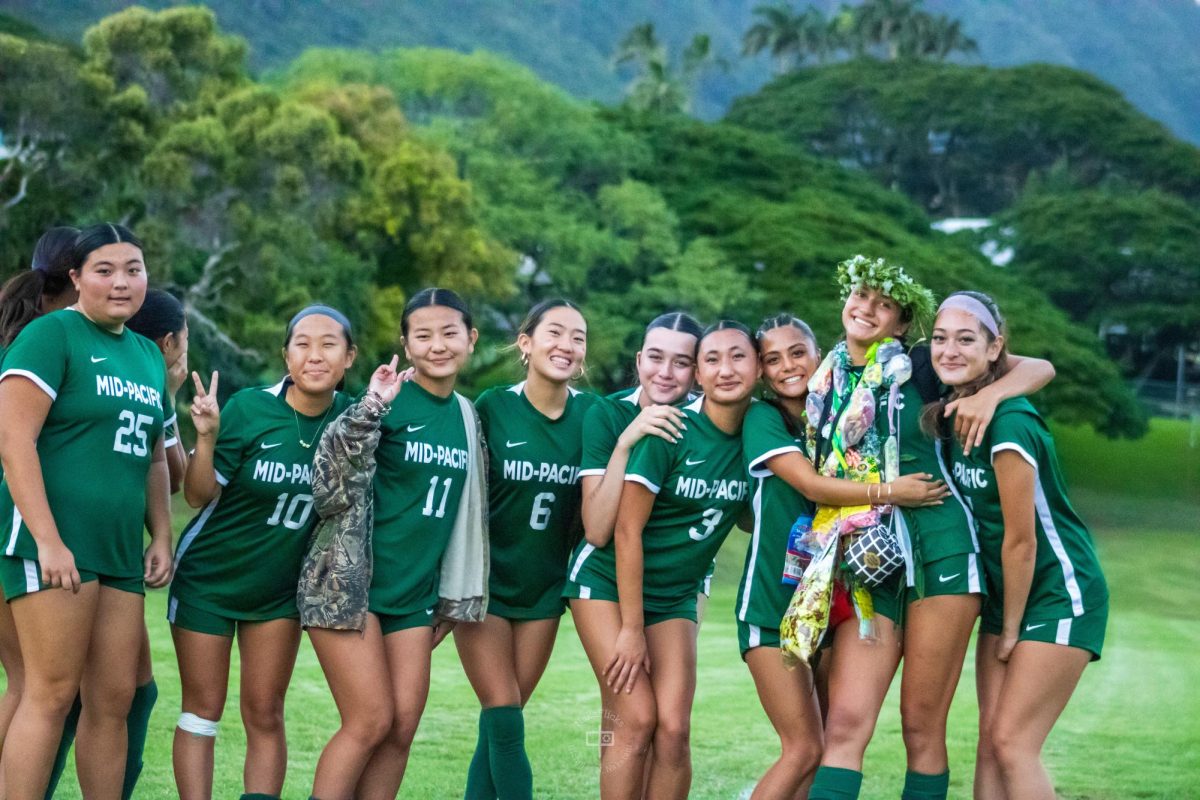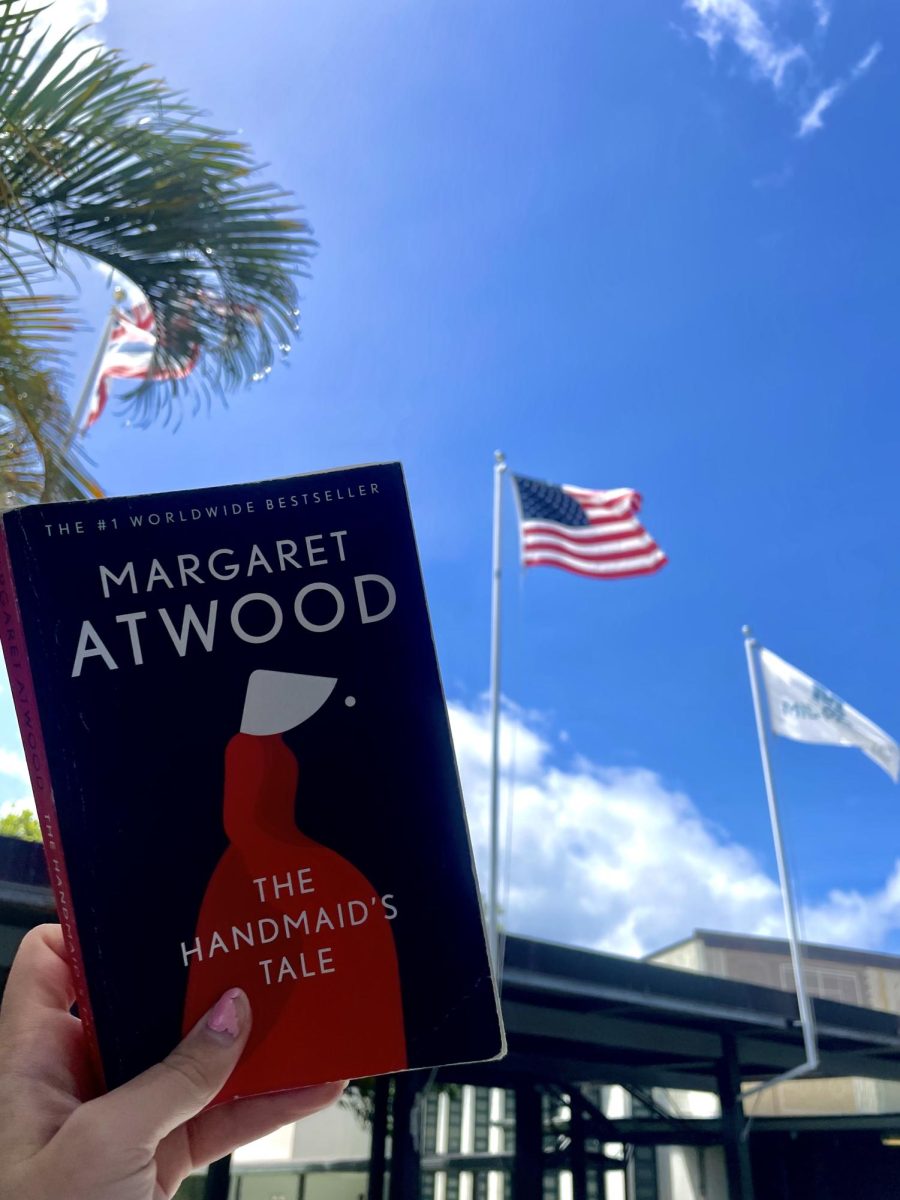Virtual students and teachers voice their experiences through COVID-19
Illustration by Camryn Machado
Teaching and learning have changed drastically to incorporate virtual learning.
April 19, 2021
Confusion and sighs filled a recent math class when the teacher asked an online student to restart her iPad once again to access a file while the in-person students waited for the class to resume.
Blending in-person classrooms with virtual ones has caused many adjustments throughout this year that are still in progress.
Teachers said they are still adjusting to teaching virtually even as the school year begins to come to a close. At the same time, students said that learning virtually was more difficult, due to technical issues, but also more comforting, as the safer option.
Some students only returned to campus after Spring Break, even though most returned in November.
Sophomore Mari Muramoto chose to come back to the Mid-Pacific campus in the fourth quarter of this school year after learning virtually since last school year.
“I was really scared of getting my family sick, I have a lot of people in my family and I didn’t want to chance them getting COVID,” said Muramoto.
Sophomore Sebastien Kiyabu also returned to on-campus learning in the fourth quarter after learning virtually since last April.
“Sometimes, while learning virtually, the teacher would forget their volume or not involve the students online, so it’s a lot more effective to participate in person,” said Kiyabu.
Sophomore Laulea Haga went virtual for the fourth quarter after learning in-person since November.
“Even though there were a lot of strict rules, not all of them are being enforced, and that’s why I didn’t feel comfortable coming back to campus just yet,” she said. “Why not take the option of learning virtually while we still have the option?”
Many teachers said they changed their curriculum to better fit the virtual environment and hybrid learning.
English teacher David Viehl continued teaching virtually into the second semester, changing his curriculum to fit his classes since he was online as well.
“Teaching virtually shifted my attention to giving students the skills they need to teach themselves,” said Viehl.
Sophomore Adam Ward is currently taking two classes with virtual teachers, film and acting. He said that having virtual teachers allows students to get away with a lot more.
“One of the side effects of [the teacher being virtual] is that they don’t have very easy methods of controlling what the students are doing so they don’t have to worry about any form of retribution,” he said.
Haga also said there was curriculum change with the Mid-Pacific Exploratory (MPX) Program.
“We’re mostly making infographics, using Google Draw and other collaborative systems from Google,” she said.
Science Teacher Michael Valentine adjusted his curriculum by avoiding hands-on learning.
“I had flipped everything and instead of doing the easy subjects, I had to do the hard subjects that don’t involve hands-on learning like chemistry and then I taught the immune system,” he said.
Every student works differently, and some people learn better virtual or in person, said Social Studies Teacher Lou Majchrzak.
“It all depends on the students themselves, some flourish in a virtual environment, but I think the majority of people probably prefer in-person learning,” said Majchrzak.
Staff Writer Riko Santos contributed to this report.

